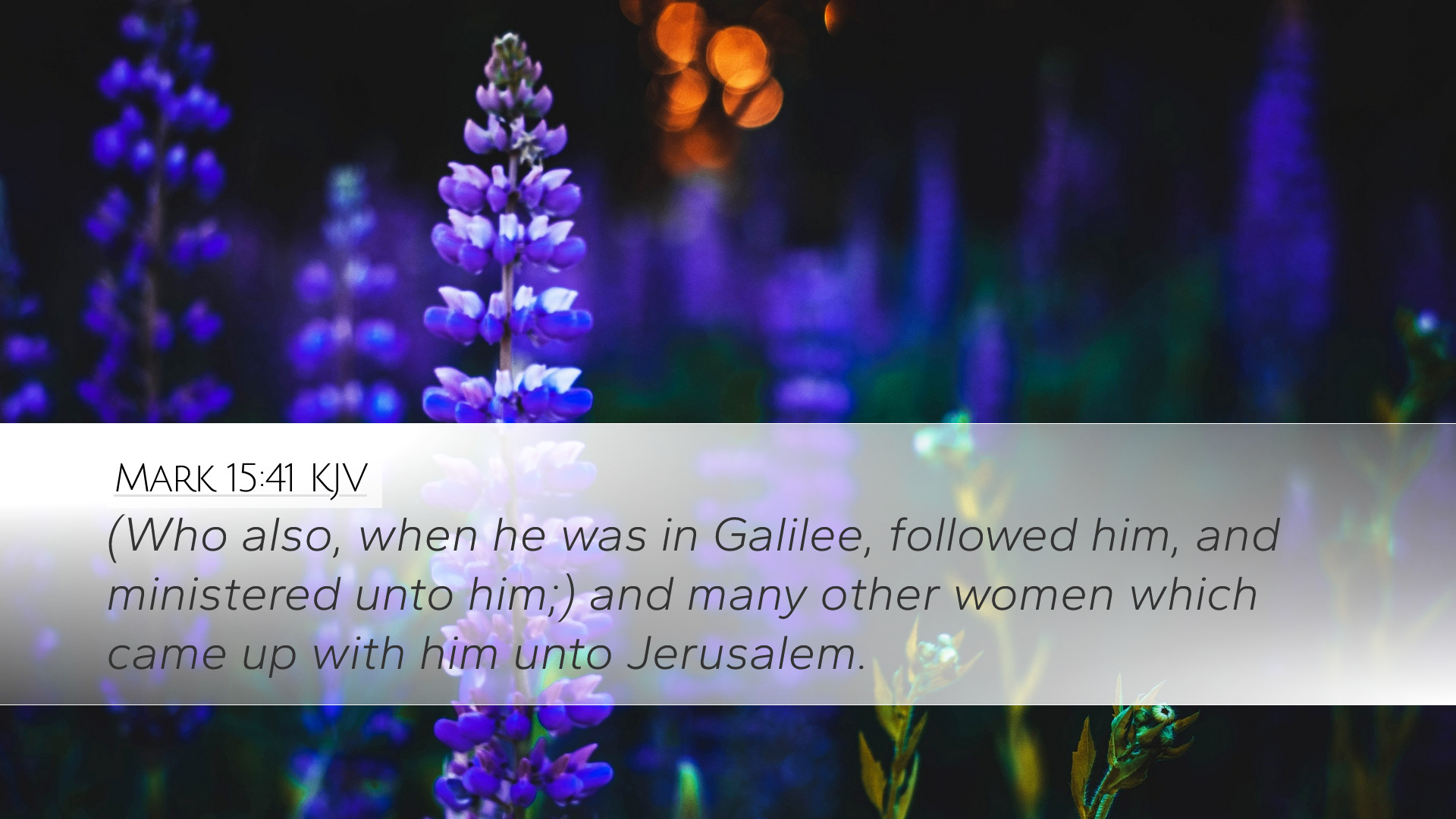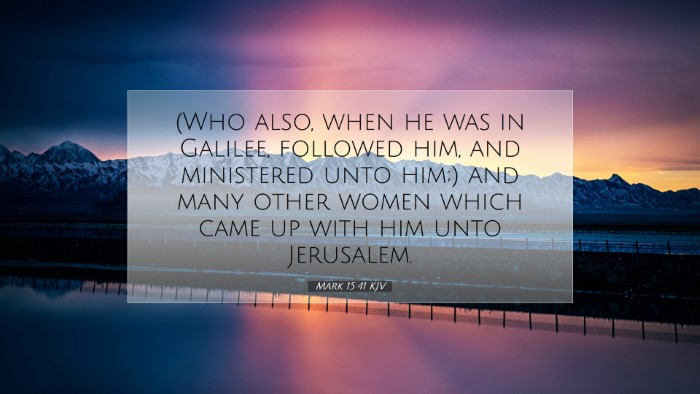Commentary on Mark 15:41
Mark 15:41 (ESV): "There were also women looking on from a distance, among whom were Mary Magdalene, and Mary the mother of James the younger and of Joses, and Salome."
Contextual Background
The 15th chapter of Mark's Gospel conveys the events surrounding the crucifixion of Jesus Christ. In this somber episode, various figures bear witness to the final moments of Christ's earthly ministry. The mention of women in this verse highlights their essential roles in the narrative of Christ's suffering and death.
Insights from Matthew Henry
Matthew Henry emphasizes the significance of the women who followed Jesus. He notes that these women exhibited remarkable devotion, remaining near Christ even as His disciples fled in fear. Their presence at the crucifixion stands as a testament to their loyalty and courage.
- Women’s Faithfulness: Henry points out that the women were not merely passive observers; they were actively engaged in Jesus' ministry throughout His life and now in His death.
- Contrasting Responses: He contrasts the reaction of the disciples with that of the women, who showcased resilience and unwavering faith when facing the horrors of the crucifixion.
Insights from Albert Barnes
Albert Barnes focuses on the identities of the women named in this verse. He identifies Mary Magdalene, a key figure in the New Testament, who is acknowledged for her transformed life after encountering Christ. The other Mary is identified as the mother of James the younger and Joses, and Salome is likely the mother of the apostles James and John.
- Mary Magdalene: Barnes notes her importance as a witness to the resurrection, emphasizing that her presence at the crucifixion prefigures her significant role in the post-resurrection narrative.
- Salome's Role: Regarding Salome, he emphasizes the familial ties and the community of women who were companions in Jesus' ministry.
- Encouragement for Believers: Barnes encourages believers to reflect on the tenacity of these women, advocating that faith often flourishes in the midst of suffering.
Insights from Adam Clarke
Adam Clarke adds a historical dimension to the commentary on Mark 15:41. He notes that the presence of women at the crucifixion bears historical significance, as they often represented a faithful remnant during times of intense persecution. Clarke also highlights the societal context, where women were often marginalized, yet here they occupy a critical place in the gospel narrative.
- Historical Testimony: Clarke suggests that the inclusion of women not only serves to lend credibility to the account but also counters the cultural norms that often overlooked the contributions of women in society.
- Role of Women in Ministry: He calls attention to how these women embody the principles of service and sacrifice, which are hallmarks of Christian discipleship.
- Contrast with Male Disciples: Clarke elaborates on how the fearlessness of the women shines in contrast to the frightened male disciples, providing a poignant reminder of the strength that can be found in faith.
Theological Reflections
The presence of women at the crucifixion underscores a powerful theological truth: the inclusivity of the gospel. This narrative demonstrates that discipleship is not confined to men alone, and that the kingdom of God calls individuals of all backgrounds to bear witness to Christ's work.
- Witness to Suffering: The women represent a suffering community that understands the gravity of the moment, challenging contemporary readers to reflect on their own commitment despite hardships.
- Symbol of Hope: Their unwavering presence symbolizes hope, as they later become the first witnesses to the resurrection—an act that transformed despair into joy.
- Encouragement for Today: For today's church, their example serves to inspire both individuals and communities to remain steadfast in faith, even amidst trials.
Conclusion
Mark 15:41 embodies critical themes of faithfulness, courage, and transformation. As the disciples scattered, these women stood firm, reflecting the heart of true discipleship. Their inclusion in the crucifixion narrative is a profound reminder of God’s call to serve, witness, and hope amidst trials. For pastors, theologians, and students of the Word, this passage invites deep reflection on the call to faith—the courage to stand firm in the darkest hour, and the promise of resurrection and renewal that follows suffering.


